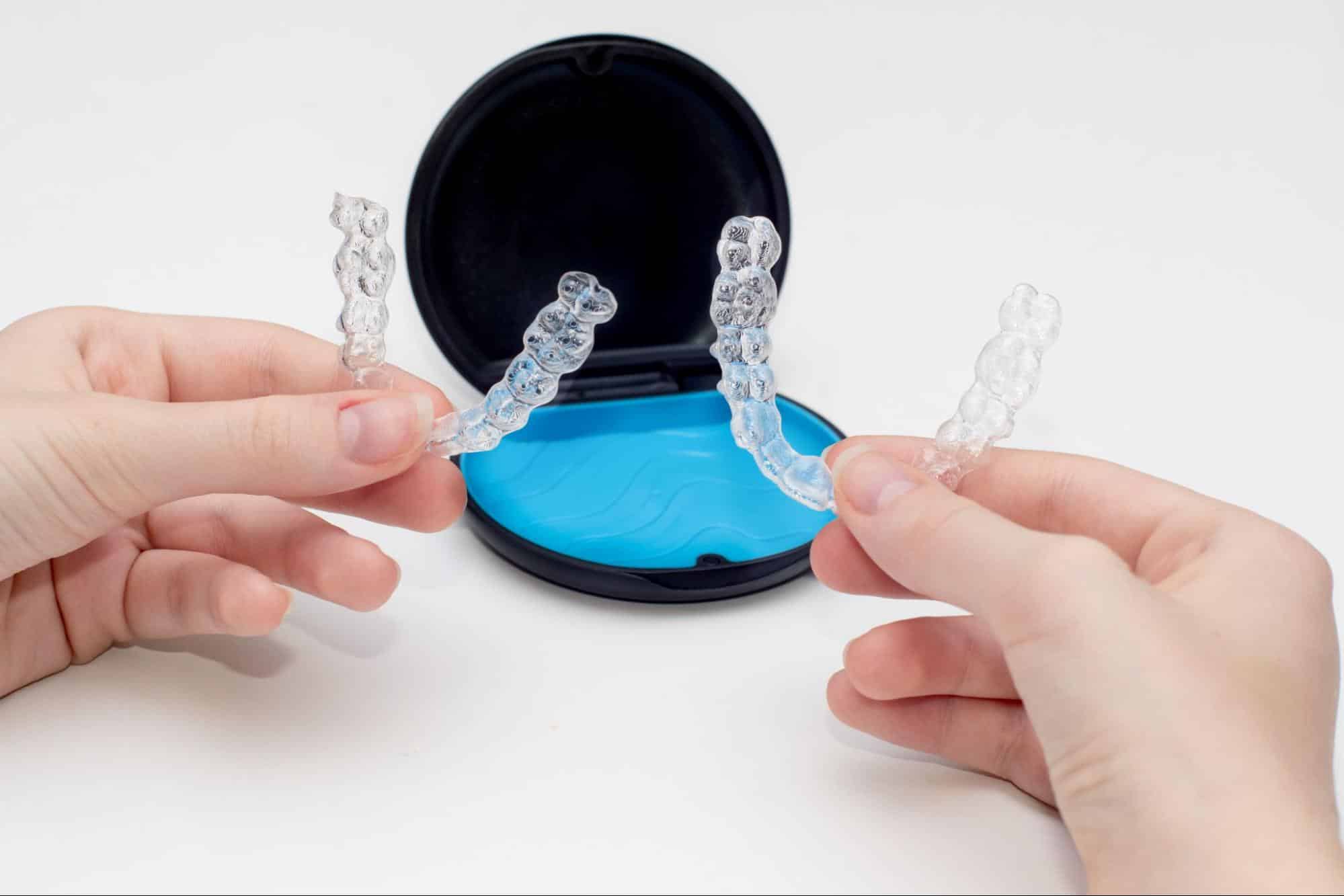
Clear aligners are quickly gaining popularity in Singapore compared to traditional metal or ceramic braces. While there are many pros and cons of both dental braces and clear aligners, these ‘invisible braces’ have become especially popular for how subtle and simple they are.
Clear aligners from brands such as Invisalign are particularly popular as you often can’t even tell if someone is wearing them – allowing the wearer to not feel self-conscious throughout the orthodontic correction process.
Because of this popularity many ‘at-home’ alternatives to clear aligners have emerged on the market in recent years. These often promise the same results as dentist-administered clear aligners while remaining fuss-free, non-invasive, and more affordable – but before you buy your first kit, here are some safety considerations to keep in mind.
Similar to clear dental aligners, getting a pair of at-home clear aligners usually begins with filling in an online or physical enquiry. This might involve sending the company x-rays or photos of your teeth, or using at at-home dental impression kit to create a 3D image or imprint of your teeth.
The company’s dentists will then review any 3D imprints, photos, and questionnaires about your orthodontic or dental concerns to create a personalised treatment plan and unique teeth alignment trays. You will then receive your alignment trays in the mail, along with your treatment plan that may include details about frequency of wear and checkups.
Many of these companies carry out these processes almost entirely online – allowing them to cut back on costly lab and consultation fees. This is one reason why these at-home options have a lower cost compared to other established clear aligner brands such as Invisalign, but these same factors might also pose health and safety risks.
The biggest difference between at-home clear aligners and orthodontist-supervised clear aligners from a dental clinic is the lack of proper longterm supervision.
Orthodontic correction is a complicated process and adjusting the teeth too quickly may cause damage to your teeth, gums, or jaw.
Because at-home treatment companies tend to offer virtual or telemedicine consultations rather than in-person checkups, there is the possibility that errors or mistakes in the treatment plan may not be noticed till later. This could result in longterm damage to your teeth, or delayed progress in your orthodontic correction.
As many at-home aligner brands are still very new, there is also limited research and data on how effective they are in treating more severe cases of crooked teeth, misalignment, or other dental problems.
Overall, those interested in at-home clear aligners should be aware of the potential risks and hazards before pursuing any treatments.
Those who want to feel more assured throughout their orthodontic correction journey can opt to get trusted clear aligners fitted at a local dentist or orthodontist clinic in Singapore.
FDC’s staff includes experienced dentists who can carry out orthodontic treatments such as traditional dental braces and invisible braces alike.
We offer Invisalign clear aligners in all of our clinics which can treat a variety of dental conditions inlcuding underbite, overbite, crossbite, and overcrowding. Our Invisalign treatment packages range between 3-6 months to 18-24 months in length and the cost includes consultations, x-rays, digital impressions, and an initial set of retainers.
Get in touch with any of our dental clinic locations across Singapore to find out more, or book an appointment online.
Contact
For more information, please contact our friendly customer service team
Menu
Services
Why Us